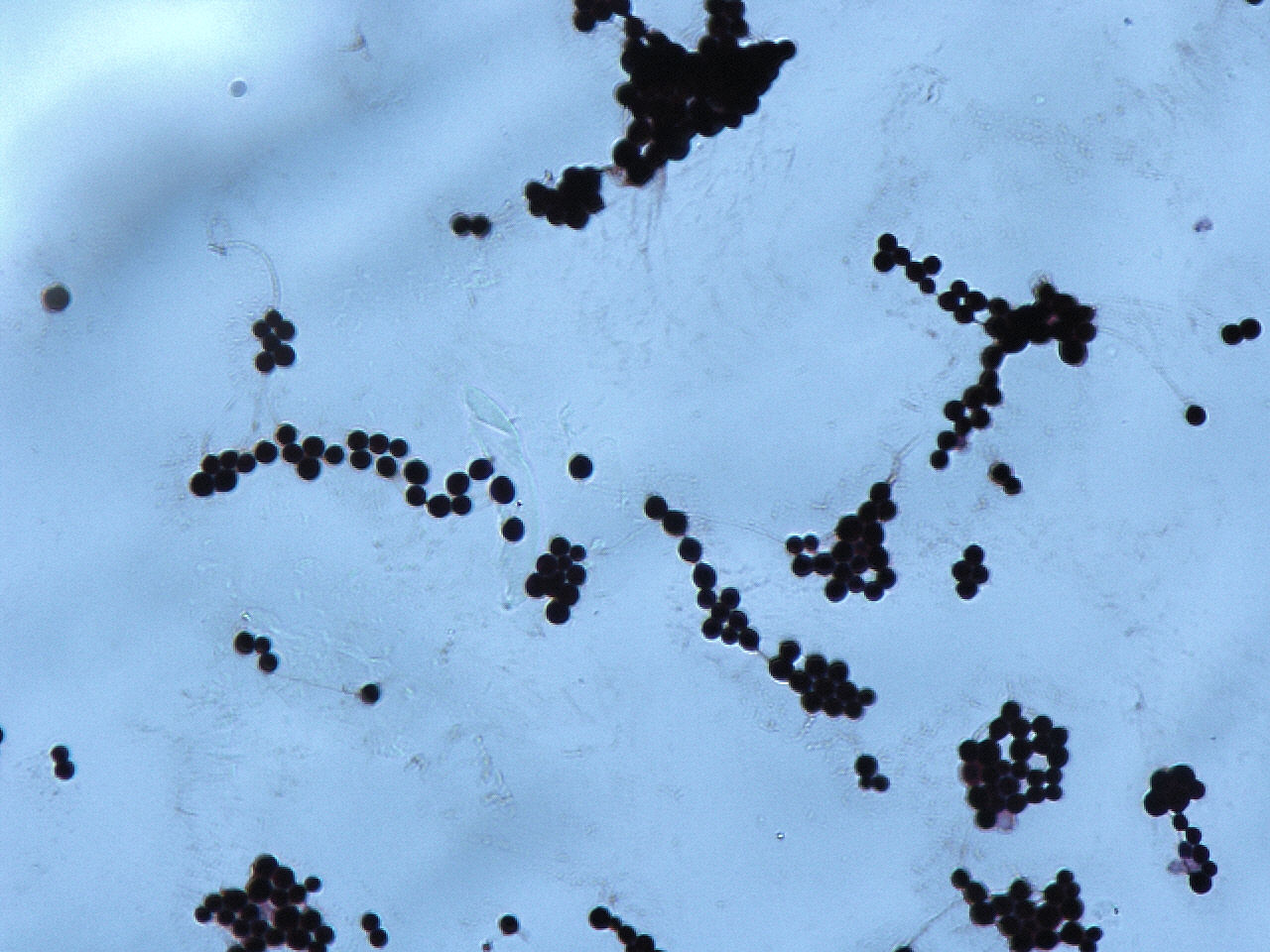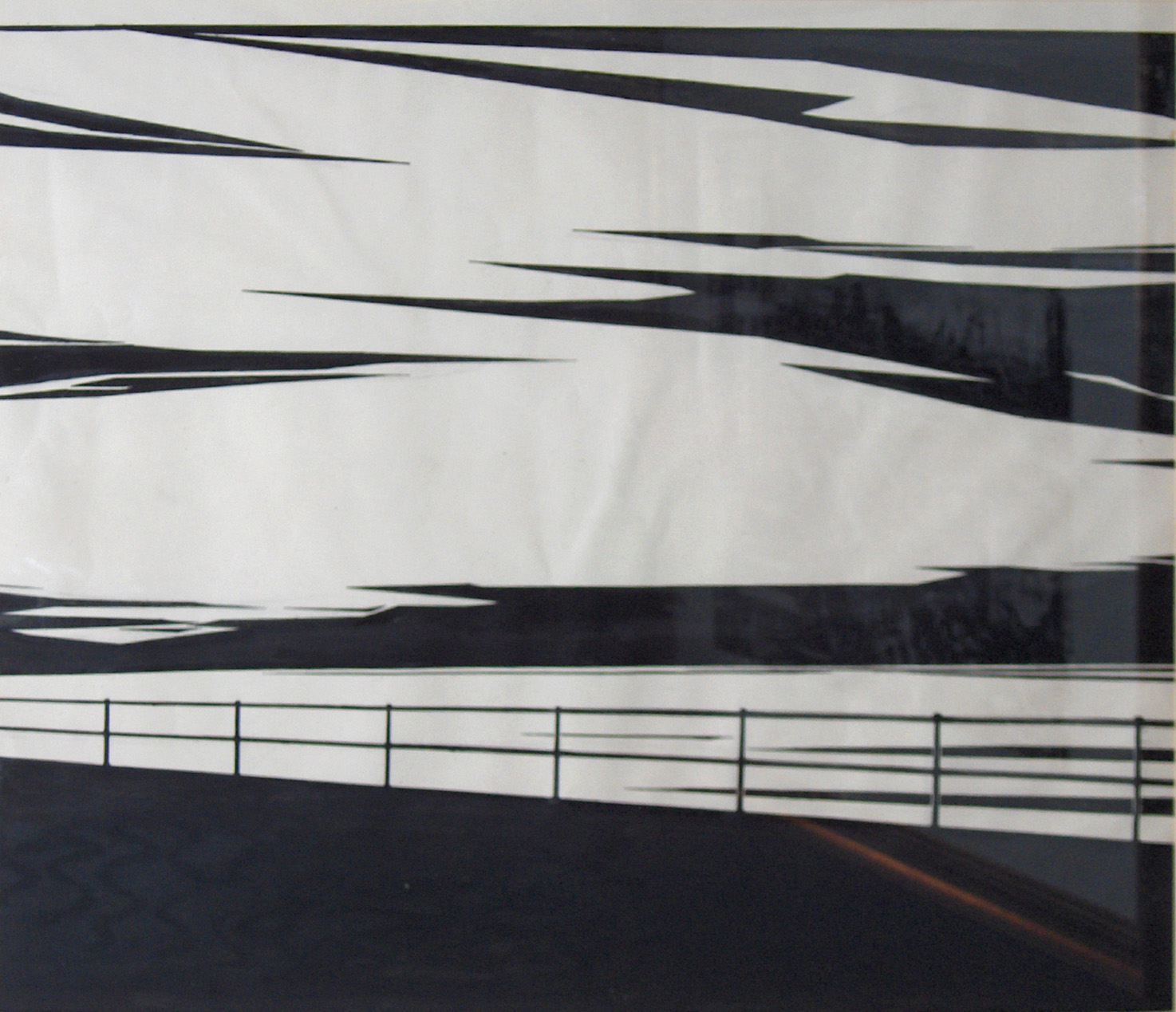 |
Cryptococcus Neoformans
''Cryptococcus neoformans'' is an encapsulated basidiomycetous yeast belonging to the class Tremellomycetes and an obligate aerobe that can live in both plants and animals. Its teleomorph is a filamentous fungus, formerly referred to ''Filobasidiella neoformans''. In its yeast state, it is often found in bird excrement. It has remarkable genomic plasticity and genetic variability between its strains, making treatment of the disease it causes difficult. ''Cryptococcus neoformans'' causes disease primarily in immunocompromised hosts, such as HIV or cancer patients. In addition it has been shown to cause disease in apparently immunocompetent hosts, especially in developed countries. Classification ''Cryptococcus neoformans'' has undergone numerous nomenclature revisions since its first description in 1895. It formerly contained two varieties: ''C. neoformans ''var.'' neoformans'' and ''C. neoformans '' var.'' grubii''. A third variety, ''C. neoformans ''var.'' gattii'', was la ... [...More Info...] [...Related Items...] OR: [Wikipedia] [Google] [Baidu] |
 |
Jean Paul Vuillemin
Jean Paul Vuillemin (13 February 1861 – 25 September 1932 in Malzéville) was a French mycology, mycologist born in Docelles. He studied at the University of Nancy, earning his medical doctorate in 1884. In 1892 he obtained his doctorate in sciences at the University of Paris, Sorbonne, and from 1895 to 1932 he was a professor of natural history at the medical faculty in Nancy.BHL Taxonomic literature : a selective guide to botanical publications He described the genera ''Spinalia'' and ''Zygorhynchus''. The mushroom genus ''Vuilleminia'' (René Maire, Maire) is named after him. In 1889 he employed the term "antibiotic" when describing the substance pyocyanin. In 1901 he transferred the yeast-like fungus that was named ''Saccharomyces hominis'' by Otto Busse and ''Saccharomyces neoformans'' by Fra ... [...More Info...] [...Related Items...] OR: [Wikipedia] [Google] [Baidu] |
 |
Cryptococcus Gram Film
''Cryptococcus'' is a genus of fungi in the family Cryptococcaceae that includes both yeasts and filamentous species. The filamentous, sexual forms or teleomorphs were formerly classified in the genus ''Filobasidiella'', while ''Cryptococcus'' was reserved for the yeasts. Most yeast species formerly referred to ''Cryptococcus'' have now been placed in different genera. Some ''Cryptococcus'' species cause a disease called cryptococcosis. Taxonomy The genus was described by French mycologist Jean Paul Vuillemin in 1901, when he failed to find ascospores characteristic of the genus ''Saccharomyces'' in the yeast previously known as ''Saccharomyces neoformans''. Over 300 additional names were subsequently added to the genus, almost all of which were later removed following molecular research based on cladistic analysis of DNA sequences. As a result, some ten species are currently recognized in ''Cryptococcus''. The teleomorph was first described in 1975 by K.J. Kwon-Chung, who ... [...More Info...] [...Related Items...] OR: [Wikipedia] [Google] [Baidu] |
|
Facultative Intracellular Pathogen
Intracellular parasites are microparasites that are capable of growing and reproducing inside the cells of a host. They are also called intracellular pathogens. Types There are two main types of intracellular parasites: Facultative and Obligate. Facultative intracellular parasites are capable of living and reproducing in or outside of host cells. Obligate intracellular parasites, on the other hand, need a host cell to live and reproduce. Many of these types of cells require specialized host types, and invasion of host cells occurs in different ways. Facultative Facultative intracellular parasites are capable of living and reproducing either inside or outside cells. Bacterial examples include: Fungal examples include: Obligate Obligate intracellular parasites cannot reproduce outside their host cell, meaning that the parasite's reproduction is entirely reliant on intracellular resources. All viruses are obligate intracellular parasites. Bacterial examples (that affect ... [...More Info...] [...Related Items...] OR: [Wikipedia] [Google] [Baidu] |
|
|
Bacterial Capsule
The bacterial capsule is a large structure common to many bacteria. It is a polysaccharide layer that lies outside the cell envelope, and is thus deemed part of the outer envelope of a bacterial cell. It is a well-organized layer, not easily washed off, and it can be the cause of various diseases. The capsule—which can be found in both gram negative and gram-positive bacteria—is different from the second lipid membrane – bacterial outer membrane, which contains lipopolysaccharides and lipoproteins and is found only in gram-negative bacteria. When the amorphous viscid secretion (that makes up the capsule) diffuses into the surrounding medium and remains as a loose undemarcated secretion, it is known as a slime layer. Capsule and slime layer are sometimes summarized under the term glycocalyx. Composition Most bacterial capsules are composed of polysaccharide, but some species use other materials, such as poly-D- glutamic acid in '' Bacillus anthracis''. Because most ... [...More Info...] [...Related Items...] OR: [Wikipedia] [Google] [Baidu] |
|
 |
Polysaccharide
Polysaccharides (), or polycarbohydrates, are the most abundant carbohydrates found in food. They are long-chain polymeric carbohydrates composed of monosaccharide units bound together by glycosidic linkages. This carbohydrate can react with water (hydrolysis) using amylase enzymes as catalyst, which produces constituent sugars (monosaccharides or oligosaccharides). They range in structure from linear to highly branched. Examples include storage polysaccharides such as starch, glycogen and galactogen and structural polysaccharides such as hemicellulose and chitin. Polysaccharides are often quite heterogeneous, containing slight modifications of the repeating unit. Depending on the structure, these macromolecules can have distinct properties from their monosaccharide building blocks. They may be amorphous or even insoluble in water. When all the monosaccharides in a polysaccharide are the same type, the polysaccharide is called a homopolysaccharide or homoglycan, but when more t ... [...More Info...] [...Related Items...] OR: [Wikipedia] [Google] [Baidu] |
|
Virulence
Virulence is a pathogen's or microorganism's ability to cause damage to a host. In most cases, especially in animal systems, virulence refers to the degree of damage caused by a microbe to its host. The pathogenicity of an organism—its ability to cause disease—is determined by its virulence factors. In the specific context of gene for gene systems, often in plants, virulence refers to a pathogen's ability to infect a resistant host. Virulence can also be transferred using a plasmid. The noun ''virulence'' (Latin noun ) derives from the adjective ''virulent'', meaning disease severity. The word ''virulent'' derives from the Latin word ''virulentus'', meaning "a poisoned wound" or "full of poison". The term ''virulence'' does not only apply to viruses. From an ecological standpoint, virulence is the loss of fitness induced by a parasite upon its host. Virulence can be understood in terms of proximate causes—those specific traits of the pathogen that help make the host ... [...More Info...] [...Related Items...] OR: [Wikipedia] [Google] [Baidu] |
|
|
Ionizing Radiation
Ionizing (ionising) radiation, including Radioactive decay, nuclear radiation, consists of subatomic particles or electromagnetic waves that have enough energy per individual photon or particle to ionization, ionize atoms or molecules by detaching electrons from them. Some particles can travel up to 99% of the speed of light, and the electromagnetic waves are on the high-energy portion of the electromagnetic spectrum. Gamma rays, X-rays, and the higher energy vacuum ultraviolet, ultraviolet part of the electromagnetic spectrum are ionizing radiation; whereas the lower energy ultraviolet, visible light, infrared, microwaves, and radio waves are non-ionizing radiation. Nearly all types of laser light are non-ionizing radiation. The boundary between ionizing and non-ionizing radiation in the ultraviolet area cannot be sharply defined, as different molecules and atoms ionize at Ionization energies of the elements (data page), different energies. The energy of ionizing radiation starts ... [...More Info...] [...Related Items...] OR: [Wikipedia] [Google] [Baidu] |
|
 |
Chernobyl Nuclear Power Plant
The Chernobyl Nuclear Power Plant (ChNPP) is a nuclear power plant undergoing decommissioning. ChNPP is located near the abandoned city of Pripyat in northern Ukraine, northwest of the city of Chernobyl, from the Belarus–Ukraine border, and about north of Kyiv. The plant was cooled by an engineered pond, fed by the Pripyat River about northwest from its juncture with the Dnieper River. Originally named the Chernobyl Nuclear Power Plant of V. I. Lenin after the founding leader of the Soviet Union, the plant was commissioned in phases with the four reactors entering commercial operation between 1978 and 1984. In 1986, in what became known as the Chernobyl disaster, reactor No. 4 suffered a catastrophic explosion and meltdown; as a result of this, the power plant is now within a large restricted area known as the Chernobyl Exclusion Zone. Both the zone and the power plant are administered by the State Agency of Ukraine on Exclusion Zone Management. The three other reacto ... [...More Info...] [...Related Items...] OR: [Wikipedia] [Google] [Baidu] |
 |
Cerebrospinal Fluid
Cerebrospinal fluid (CSF) is a clear, colorless Extracellular fluid#Transcellular fluid, transcellular body fluid found within the meninges, meningeal tissue that surrounds the vertebrate brain and spinal cord, and in the ventricular system, ventricles of the brain. CSF is mostly produced by specialized Ependyma, ependymal cells in the choroid plexuses of the ventricles of the brain, and absorbed in the arachnoid granulations. It is also produced by ependymal cells in the lining of the ventricles. In humans, there is about 125 mL of CSF at any one time, and about 500 mL is generated every day. CSF acts as a shock absorber, cushion or buffer, providing basic mechanical and immune system, immunological protection to the brain inside the Human skull, skull. CSF also serves a vital function in the cerebral autoregulation of cerebral blood flow. CSF occupies the subarachnoid space (between the arachnoid mater and the pia mater) and the ventricular system around and inside t ... [...More Info...] [...Related Items...] OR: [Wikipedia] [Google] [Baidu] |
 |
Mucicarmine Stain
Mucicarmine stain is a staining procedure used for different purposes. In microbiology the stain aids in the identification of a variety of microorganisms based on whether or not the cell wall stains intensely red. Generally this is limited to microorganisms with a cell wall that is composed, at least in part, of a polysaccharide component. One of the organisms that is identified using this staining technique is ''Cryptococcus neoformans ''Cryptococcus neoformans'' is an encapsulated basidiomycetous yeast belonging to the class Tremellomycetes and an obligate aerobe that can live in both plants and animals. Its teleomorph is a filamentous fungus, formerly referred to ''Filob ...''. Another use is in surgical pathology where it can identify mucin. This is helpful, for example, in determining if the cancer is a type that produces mucin. Example would be to distinguish between high grade Mucoepidermoid Carcinoma of the parotid, which stains positive vs Squamous Cell Carcinoma ... [...More Info...] [...Related Items...] OR: [Wikipedia] [Google] [Baidu] |
 |
India Ink
India ink (British English: Indian ink; also Chinese ink) is a simple black or coloured ink once widely used for writing and printing and now more commonly used for drawing and outlining, especially when inking comic books and comic strips. India ink is also used in medical applications. Compared to other inks, such as the iron gall ink previously common in Europe, India ink is noted for its deep, rich black color. It is commonly applied with a paintbrush (such as an ink brush) or a dip pen. In East Asian traditions such as ink wash painting and Chinese calligraphy, India ink is commonly used in a solid form called an inkstick. Composition Basic India ink is composed of a variety of fine soot, known as ''lampblack'', combined with water to form a liquid. No binder material is necessary: the carbon molecules are in colloidal suspension and form a waterproof layer after drying. A binding agent such as gelatin or, more commonly, shellac may be added to make the ink more durable ... [...More Info...] [...Related Items...] OR: [Wikipedia] [Google] [Baidu] |
|
Polysaccharides
Polysaccharides (), or polycarbohydrates, are the most abundant carbohydrates found in food. They are long-chain polymeric carbohydrates composed of monosaccharide units bound together by glycosidic linkages. This carbohydrate can react with water (hydrolysis) using amylase enzymes as catalyst, which produces constituent sugars (monosaccharides or oligosaccharides). They range in structure from linear to highly branched. Examples include storage polysaccharides such as starch, glycogen and galactogen and structural polysaccharides such as hemicellulose and chitin. Polysaccharides are often quite heterogeneous, containing slight modifications of the repeating unit. Depending on the structure, these macromolecules can have distinct properties from their monosaccharide building blocks. They may be amorphous or even insoluble in water. When all the monosaccharides in a polysaccharide are the same type, the polysaccharide is called a homopolysaccharide or homoglycan, but when more t ... [...More Info...] [...Related Items...] OR: [Wikipedia] [Google] [Baidu] |